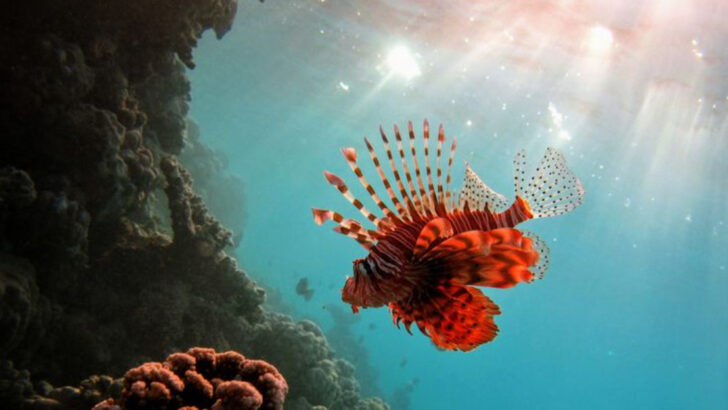The ocean isn’t quiet—it roars with life that’s weirder, wilder, and more jaw-dropping than anything on land.
Forget goldfish and seagulls. We’re talking glowing jellyfish, rainbow-colored slugs, and fish with built-in headlights.
These creatures aren’t just cool to look at—they’re survivors, shape-shifters, and deep-sea legends. Some float like ghosts. Others flash like disco balls. A few could probably star in their own sci-fi movie.
So grab your snorkel—or just your curiosity—and dive into this list of 20 oceanic species that deserve the spotlight. Prepare to be stunned by what lives beneath the surface.
Blue Whale
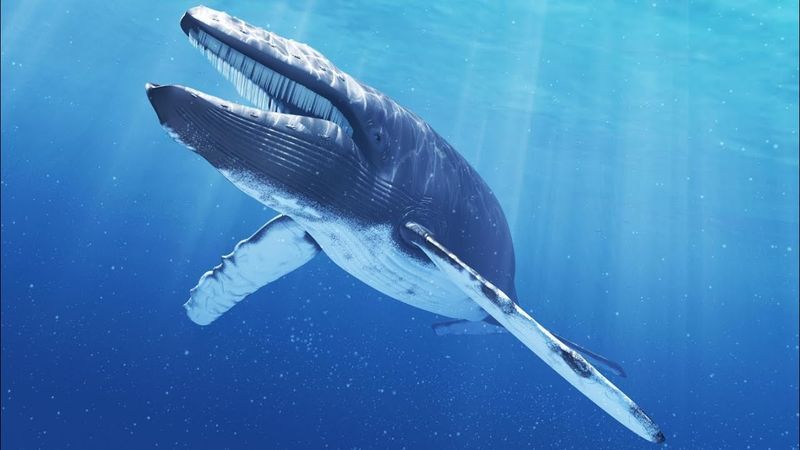
The blue whale is the largest animal on Earth, reaching lengths of up to 100 feet. Imagine a creature so massive that its heart is the size of a small car. Despite its size, the blue whale feeds primarily on tiny krill, consuming up to 4 tons a day.
These gentle giants are known for their deep, resonant calls that travel for miles underwater, serving as a form of communication. Observing a blue whale in its natural habitat is an awe-inspiring experience that leaves a lasting impression.
Blue whales are a symbol of the ocean’s grandeur and vulnerability, reminding us of the importance of conservation efforts.
Clownfish
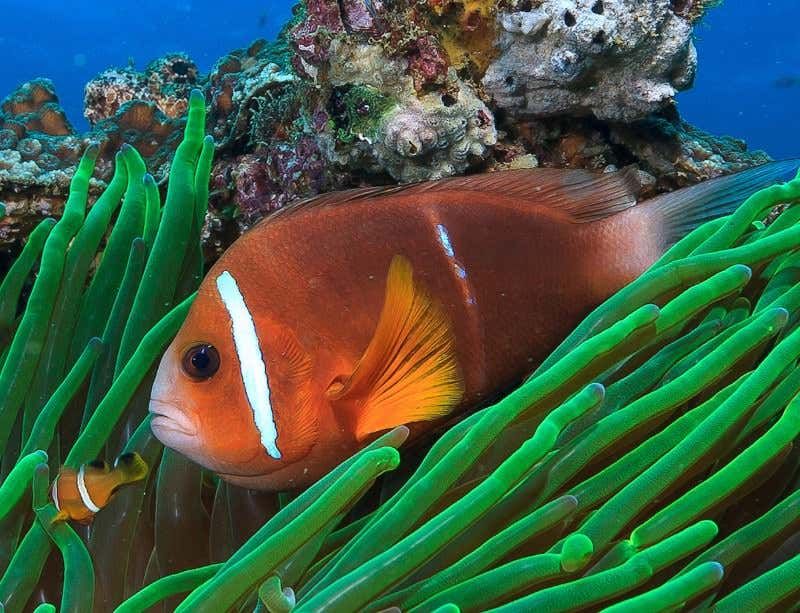
Clownfish, with their striking orange and white stripes, are perhaps best known for their role in the animated film “Finding Nemo.” But these fish have more to offer than just cinematic fame. Clownfish live in symbiosis with sea anemones, enjoying protection from predators thanks to their host’s stinging tentacles.
In return, clownfish help keep the anemones clean by eating debris and parasites. This mutually beneficial relationship is a perfect example of nature’s interconnectedness.
Their vibrant colors and playful movements make clownfish a delightful sight for divers exploring coral reefs.
Great White Shark
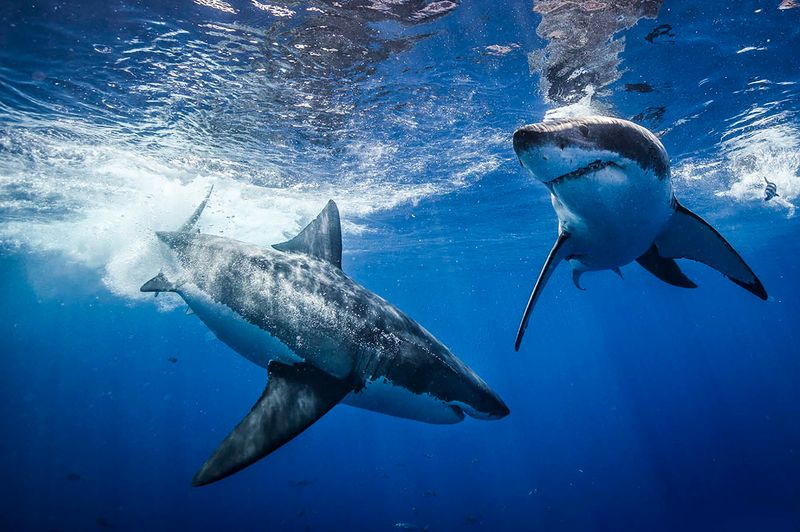
Few creatures command as much respect and fear as the great white shark. With its sleek, torpedo-shaped body and rows of razor-sharp teeth, the great white is a formidable predator. These sharks can grow up to 20 feet in length and are known for their incredible hunting skills.
With highly developed senses, they can detect even the faintest traces of blood in the water. This ability makes them efficient hunters, targeting seals, fish, and even dolphins.
Though often misunderstood, great whites are crucial to maintaining the balance in ocean ecosystems. Their presence is a testament to the ocean’s wild and untamed nature.
Sea Turtle

Sea turtles are ancient mariners, having roamed the oceans for over 100 million years. With their gentle eyes and graceful movements, they seem to glide effortlessly through the water. These reptiles are known for their incredible migration journeys, sometimes traveling thousands of miles between feeding and nesting grounds.
There are seven species of sea turtles, each facing threats from habitat destruction, pollution, and climate change.
Their presence on beaches, as they lay eggs, is a breathtaking sight, offering a glimpse into the cycle of life in the marine world. Conservation efforts are vital to ensure that future generations can witness these enchanting creatures.
Dolphin
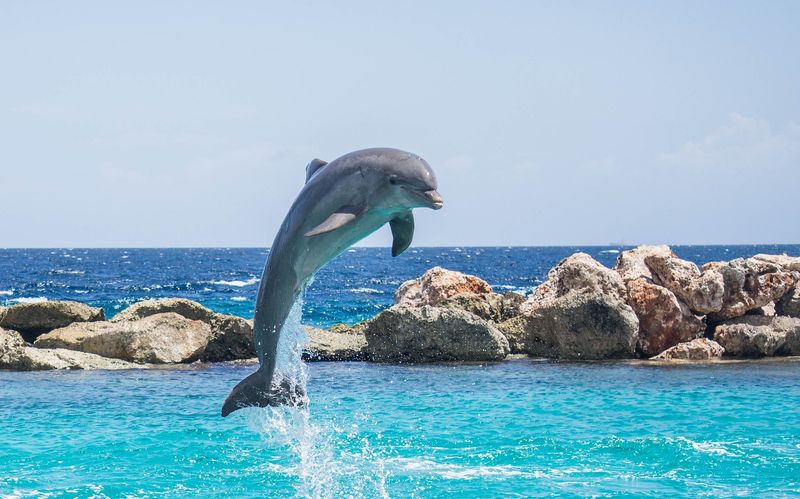
Dolphins are the acrobats of the ocean, captivating us with their playful leaps and spins. These intelligent creatures are known for their social behavior, often traveling in pods and using complex vocalizations to communicate.
Their playful nature extends to their interactions with humans, making them a favorite among marine enthusiasts. Dolphins possess remarkable problem-solving skills and show empathy, characteristics that make them fascinating subjects of study.
Swimming alongside a pod of dolphins is an exhilarating experience, showcasing the beauty and intelligence of these marine mammals. Their presence enriches the ocean’s dynamic tapestry.
Octopus
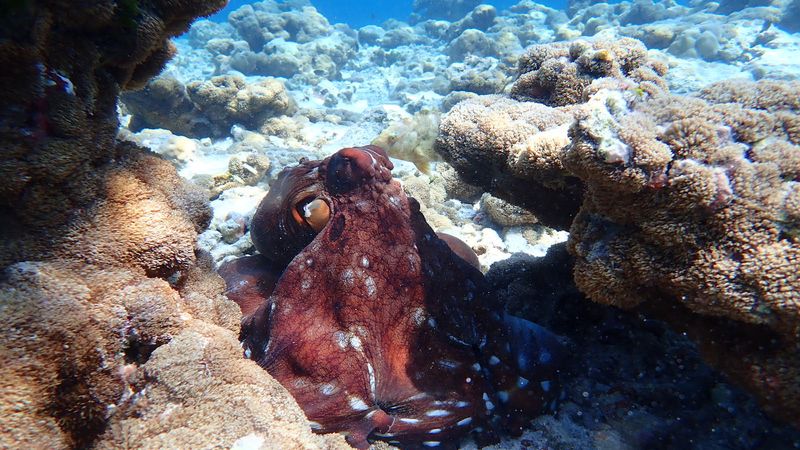
The octopus is a master of disguise, capable of changing its skin color and texture to blend with its environment. With its eight flexible arms and clever mind, this mollusk is a marvel of the marine world. Each arm is equipped with sensitive suckers, allowing the octopus to explore and manipulate objects.
They are known for their intelligence, exhibiting problem-solving abilities and even escaping from enclosures. Octopuses are solitary creatures, often hiding in dens made from rocks and shells.
Their mysterious nature and adaptability make them a captivating subject for marine biologists and ocean lovers alike.
Manta Ray
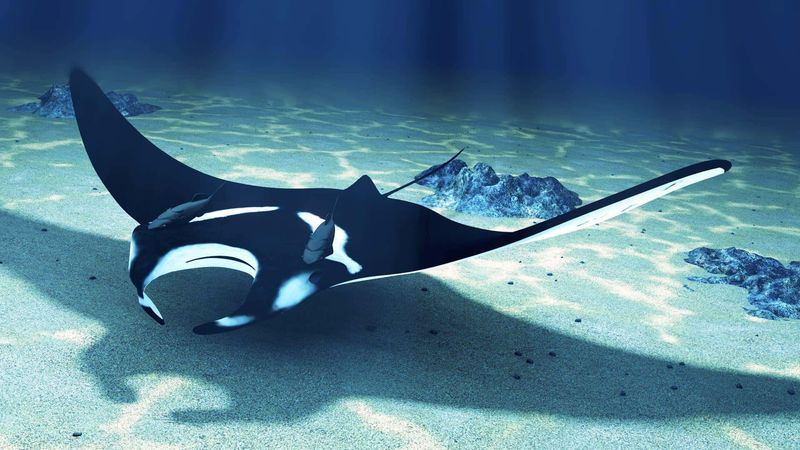
Manta rays are the gentle giants of the ocean, with wingspans reaching up to 29 feet. These elegant creatures glide gracefully through the water, feeding on plankton and small fish.
Their cephalic fins, resembling horns, have earned them the nickname “devil rays,” though their demeanor is far from sinister. Manta rays are often seen performing acrobatic flips and spins, adding to their mystique.
Their presence in the ocean is a spectacle of grace and beauty, reminding us of the wonders that lie beneath the waves. Protecting manta rays from threats like overfishing is crucial to preserving their magic for future generations.
Sea Horse

Sea horses are among the ocean’s most enchanting creatures, with their horse-like heads and curled tails. These delicate beings are unique in the animal kingdom, as males carry and birth offspring in a special pouch.
Their slow, graceful movements are mesmerizing to watch, as they use their prehensile tails to anchor themselves to seaweed or coral. Sea horses are masters of camouflage, blending seamlessly with their surroundings.
Their presence in the ocean adds a whimsical touch to the underwater landscape, reminding us of the diversity and intricacy of marine life. Protecting their habitats is essential to their survival.
Jellyfish
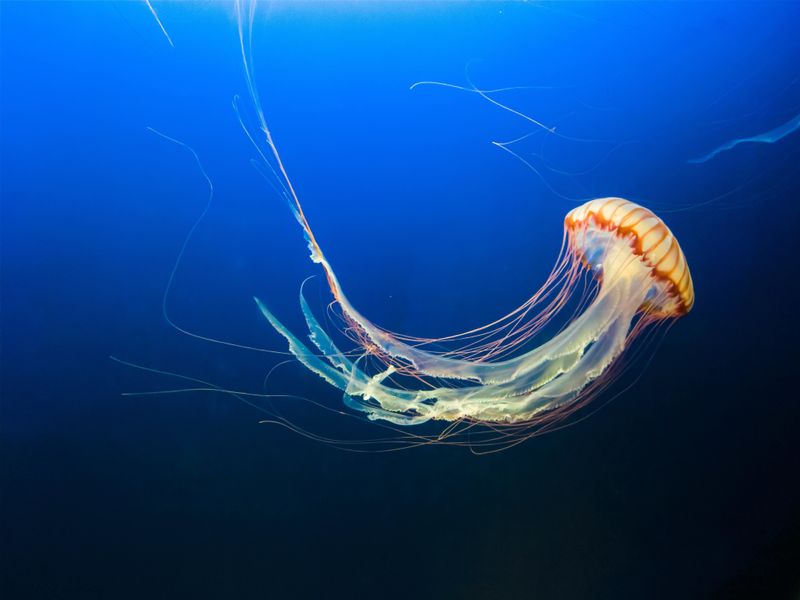
Jellyfish are ethereal and mesmerizing, drifting gracefully through the ocean’s currents. These gelatinous creatures have been around for millions of years, making them one of the oldest living animals on Earth.
With no brain or heart, jellyfish rely on a simple nerve net to sense their environment and respond to stimuli. Their stinging tentacles are both a defense mechanism and a way to capture prey.
Despite their simplicity, jellyfish display a captivating beauty, illuminating the ocean with their bioluminescent glow. Their resilience and adaptability make them intriguing subjects for study, offering insights into the ocean’s ancient history.
Orca
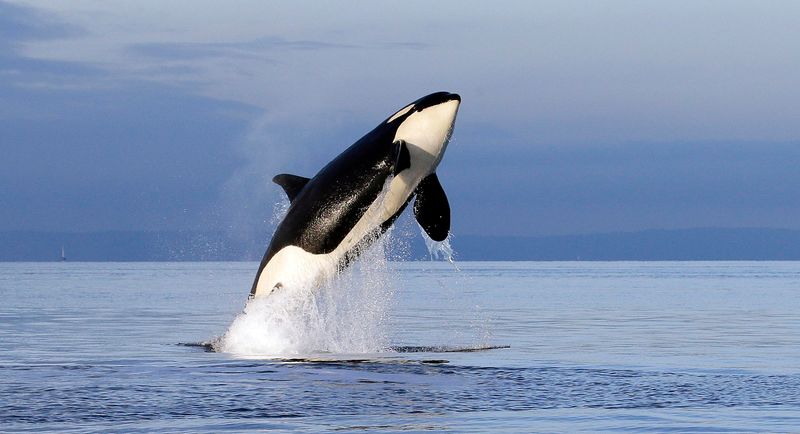
Orcas, also known as killer whales, are the apex predators of the ocean, known for their intelligence and complex social structures. These magnificent creatures can be found in oceans all around the world, from the icy Arctic to the warm waters of the tropics.
Orcas are known to hunt in pods, using sophisticated techniques to capture prey like seals, fish, and even other whales. Their striking black and white coloration adds to their allure, making them a favorite among wildlife enthusiasts.
Orcas embody the wild spirit of the ocean, showcasing the beauty and complexity of marine life. Their conservation is vital to maintaining the balance of ecosystems.
Penguin
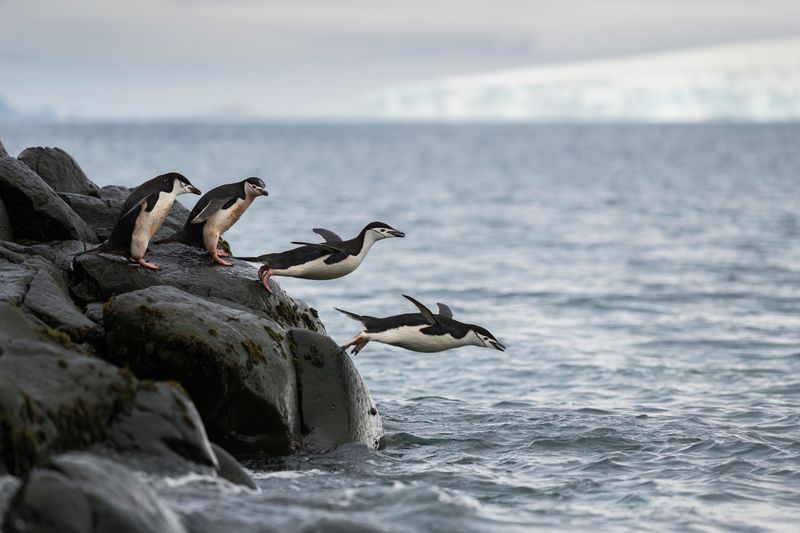
Penguins are the quintessential creatures of the Antarctic, captivating us with their charming waddles and tuxedo-like appearance. These flightless birds are masterful swimmers, using their wings to “fly” through the water with remarkable agility.
Penguins live in large colonies, relying on teamwork to endure the harsh conditions of their icy habitats. Their social behavior and nurturing instincts are fascinating to observe, particularly during the breeding season.
Despite the challenges they face, penguins remain a symbol of resilience and adaptation, inspiring us to appreciate the wonders of life in extreme environments.
Humpback Whale
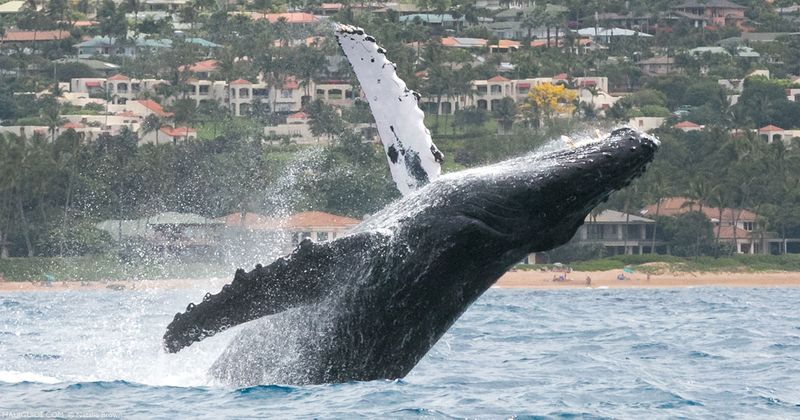
Humpback whales are the acrobats of the ocean, known for their spectacular breaching and complex songs. These gentle giants can grow up to 60 feet long and are renowned for their long migrations across the seas.
Humpbacks use their powerful tails to propel themselves out of the water, creating a breathtaking display. Their songs, a series of moans, grunts, and whines, can be heard for miles underwater, serving as communication and possibly navigation.
Observing a humpback whale in the wild is an unforgettable experience, a reminder of the beauty and mystery of the ocean’s depths.
Sea Otter

Sea otters are the playful guardians of kelp forests, known for their endearing behavior and vital ecological role. With their dense fur and agile bodies, they are perfectly adapted to life in the ocean.
Sea otters use tools like stones to crack open shellfish, showcasing their intelligence and resourcefulness. They play a crucial role in maintaining the health of kelp forests by controlling sea urchin populations.
Their playful antics and close-knit family groups make sea otters a favorite among wildlife watchers. Protecting their habitats ensures the continued vitality of these important marine ecosystems.
Lionfish
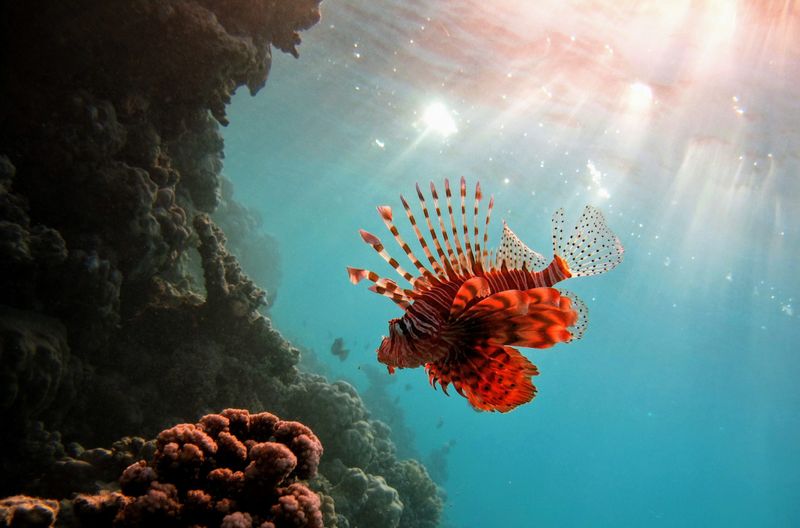
Lionfish are the stunning, yet invasive, jewels of the coral reefs. With their striking red and white spines, they are both beautiful and dangerous. These spines deliver a venomous sting, deterring potential predators.
Originally native to the Indo-Pacific, lionfish have spread to other regions, posing a threat to local ecosystems by preying on native species. Despite their invasive nature, they are a captivating subject for divers and photographers.
Efforts to control their populations are vital to preserving the delicate balance of coral reef ecosystems. Their presence is a reminder of the interconnectedness of marine life.
Sperm Whale
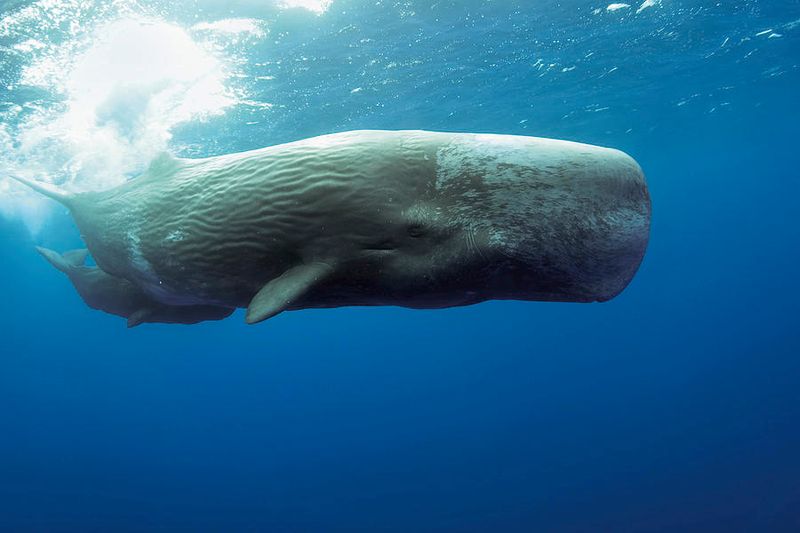
Sperm whales are the deep-diving giants of the ocean, known for their massive heads and complex social structures. These whales can reach depths of over 3,000 feet in search of squid, their primary food source.
Sperm whales are also known for their powerful, clicking vocalizations, used for communication and echolocation. Their family groups, known as pods, are tightly knit, showcasing their social nature.
Observing a sperm whale in its natural habitat is a glimpse into the mysteries of the deep sea, highlighting the ocean’s vastness and the importance of protecting these incredible creatures.
Narwhal

Narwhals, often called the “unicorns of the sea,” are known for their long, spiral tusks. These tusks are actually elongated teeth and can grow up to 10 feet long. Narwhals are native to the Arctic, where they navigate the icy waters in search of fish and squid.
Their tusks are believed to have sensory capabilities, helping them detect changes in their environment. Narwhals’ elusive nature and unique appearance have long captured human imagination.
Their existence in the harsh Arctic environment is a testament to the adaptability and resilience of marine life, emphasizing the need for conservation efforts in polar regions.
Sea Lion
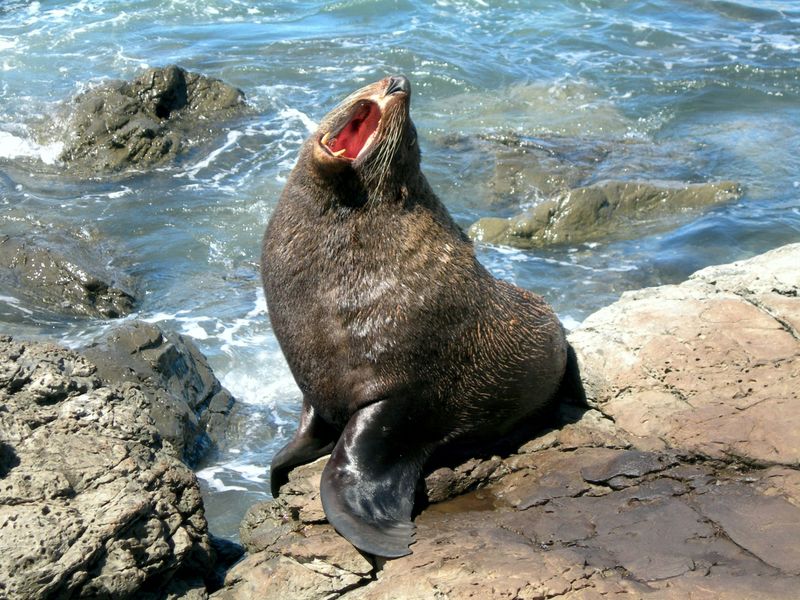
Sea lions are the charismatic acrobats of the ocean, known for their playful behavior and agility on land and in water. These social animals gather in large colonies, where their noisy interactions create a lively atmosphere.
Sea lions are powerful swimmers, using their flippers to propel themselves through the water with ease. They are skilled hunters, feeding on fish and squid.
Watching a sea lion colony is a delightful experience, offering insights into their social dynamics and adaptability. Protecting their habitats ensures the survival of these engaging marine mammals, highlighting our connection to the ocean.
Beluga Whale
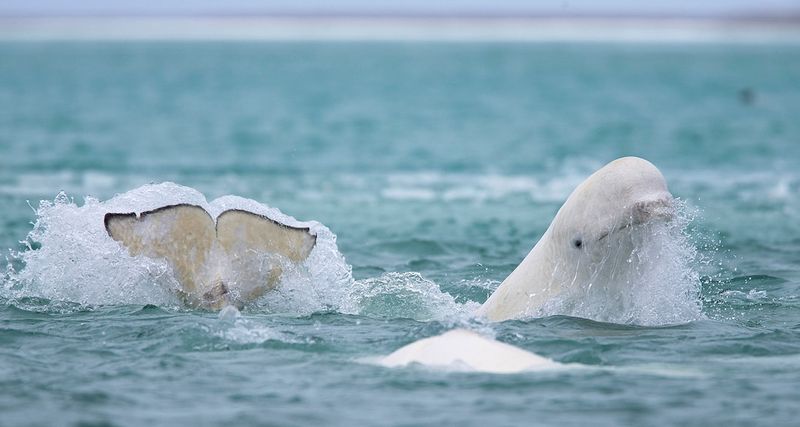
Beluga whales, with their distinctive white color and playful nature, are the “canaries of the sea.” These vocal animals are known for their wide range of sounds, from clicks and whistles to mimicking human speech.
Belugas are highly social, often seen in pods, where they engage in complex communication and interactions. Their adaptability to Arctic environments, including ice-covered waters, is remarkable.
The sight of a beluga whale in its natural habitat is enchanting, reinforcing the beauty and diversity of marine life. Protecting their fragile ecosystems is crucial to their continued survival, reflecting our responsibility to the environment.
Starfish
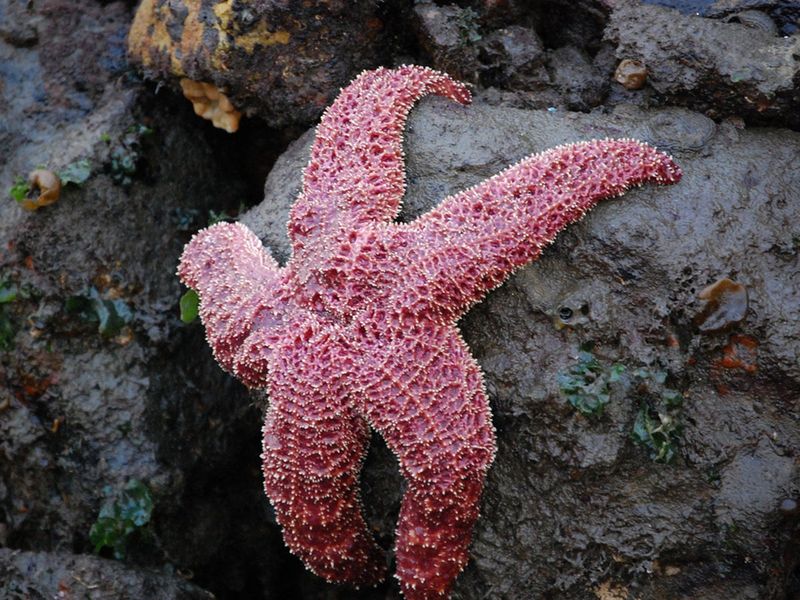
Starfish, or sea stars, are the graceful wanderers of the ocean floor, known for their radial symmetry and vibrant colors. These echinoderms have the remarkable ability to regenerate lost limbs, making them resilient inhabitants of the sea.
Starfish play a vital role in marine ecosystems, often preying on mollusks and helping maintain ecological balance. Their tube feet allow them to move slowly across the ocean floor, exploring their environment.
The sight of a starfish clinging to a rock or coral is a reminder of the ocean’s beauty and complexity. Protecting these habitats ensures the survival of these intriguing creatures.
Sarcastic Fringehead
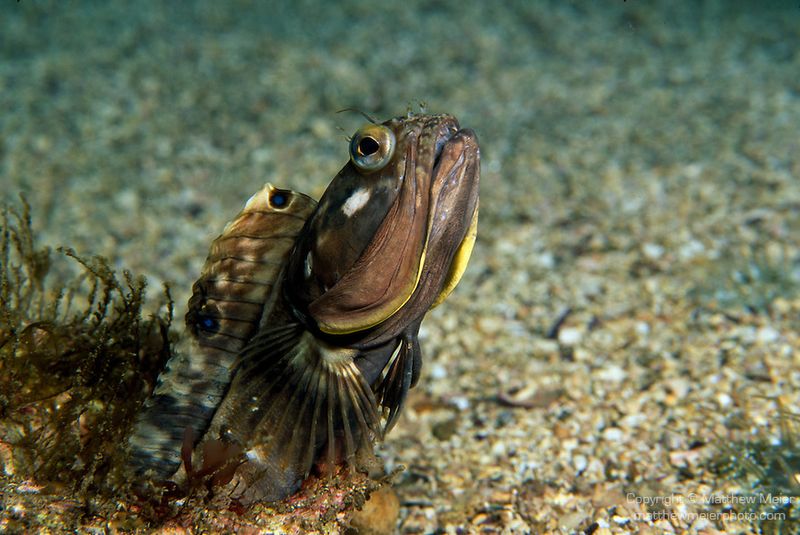
Meet the Sarcastic Fringehead, a small but fiercely territorial fish with a personality as bold as its name. Found off the Pacific coast of North America, this peculiar creature is renowned for its incredible display of aggression.
When threatened, it opens its enormous mouth wide, revealing a vibrant interior that intimidates rivals. This dramatic behavior is not just for show—it’s a survival strategy.
Despite its fierce demeanor, the Sarcastic Fringehead is an essential part of the marine ecosystem, often dwelling in rocky crevices and abandoned shells. Its unique behavior and striking appearance make it a true oceanic marvel.

